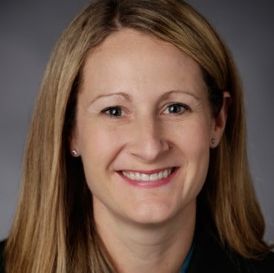- Center on Health Equity & Access
- Clinical
- Health Care Cost
- Health Care Delivery
- Insurance
- Policy
- Technology
- Value-Based Care
Combatting COVID-19 With Real-World Evidence
A vaccine isn’t the panacea many assume it will be. Even when it becomes available, the virus won’t go away. Real world evidence will be needed to guide decision making.
Before any COVID-19 vaccine is approved, millions of people will have contracted this virus. While some will die, others will survive the virus, only to face long-term consequences to their health. But a vaccine isn’t the panacea many assume it will be. Even when it becomes available, the virus won’t go away. There will still be a percentage of people who contract the illness, so it is vital that we understand how best to detect, trace, and treat it in varying populations.
Even with all the data gathered during this pandemic, there is still so much that we don’t know about the virus and won’t know for years to come.
Christian

In response, the health care industry needs to gather as much data about patients and vaccine recipients as possible to guide treatment decisions, identify risks and inform standards of care. In the near term, this data will help us to better understand the acute impact of the disease and the
Reynolds

effectiveness of new vaccines. In the long term, real world data from COVID-19 patients will show us how the virus impairs the body, what new health risks it creates and what long-term complications will emerge.
Real-world evidence (RWE) gathered from longitudinal studies of COVID-19 patients and vaccine recipients will play a crucial role in achieving these goals.
RWE Offers a Treatment Roadmap
For a virus that has such a heterogeneous presentation, insights from real world populations are mission critical; we have to know how and in whom this disease presents and the treatments used to combat the illness in the real world because there is no “standard” presentation nor treatment protocol.
As a result, healthcare professionals are flying blind, making treatment decisions based on clinical experience, short-term outcomes and anecdotal results from peers facing the same sets of challenges. Among the biggest challenges is the mystifying variety in presentation; different symptoms, many presenting like the common cold, and different outcomes occurring across the patient set with, as of today, no clear indication of who will have the worst prognosis. Many complications from COVID-19 appear to be long-lasting, including effects on lung capacity, myocarditis, chronic fatigue and vertigo. Because the virus is so new, it is difficult to predict who will contract these longer-term and problematic symptoms, how they might be prevented and what other long-term consequences exist that have yet to be identified.
Fortunately, transparency in care is high, and shared knowledge about the virus grows daily. RWE is a critical ingredient here, helping to address this lack of clarity by predicting how the virus is likely to behave in different populations so that clinicians can adapt their treatment plans and minimize risks of serious complications related to the virus.
The value of real-world studies has been increasingly recognized in recent years. Their use has been enabled by rapid access to large diverse healthcare data sets and advances in artificial intelligence-based analytics platforms. This combination of data and technology makes it possible to conduct near real-time analyses of healthcare trends and, for the first time, create a more robust and more accurate understanding of disease and treatments.
Despite the novelty of this virus, real world data (RWD) — the health information collected in real-world healthcare settings (i.e., not in clinical trials) that can be analyzed to generate RWE — has already been collected from millions of patients across the world from electronic medical records, hospital reports, state-wide healthcare utilization reports, testing centers, insurance claims databases, from patients directly and other real-world sources. Researchers can rapidly analyze these data sets to answer important questions, such as how and why different populations contract the disease, when and where they seek treatment, what outcomes they experience and how those outcomes vary based on their access to healthcare, comorbidities and other factors.
These studies are mission-critical for building a sufficient profile and understanding of the virus, and for tracking long-term symptomology in patients who contract the virus. Such insights will inform immediate treatment decisions and support better decision-making when it comes to population health measures, such as vaccine development.
Once vaccines come to market, studying their impact in real-world populations will be critical to assessing their safety and effectiveness over the long-term. They will also be valuable in uncovering any adverse events that may be too rare to show up in the clinical trials used for approval.
Real-World Study Models
Researchers have many real-world study models to choose from based on the questions they want to answer and the data they can access.
One of the most applicable designs for COVID-19 research are natural history of disease studies, which follow people who’ve had a disease or who are likely to get it to understand their disease journey, symptomology, treatment paths, and outcomes. These studies use clinically rich data from patient registries, electronic health records (EHRs), surveys and other primary and secondary sources to determine how people contract a virus, how it impacts different patient populations and what treatments deliver the best outcomes.
Enriched real-world studies are another model that will be useful for determining long-term outcomes in people who receive the vaccine or a specific treatment. Enriched studies analyze existing healthcare data to generate a baseline of knowledge, then collect additional prospective data to fill in gaps while putting minimum participation burden on patients. This allows them to answer more detailed questions about things like treatment adherence, healthcare resource utilization and quality of life.
FDA and OHDSI
We are already seeing valuable RWE gathered about the virus through the innovative use of real-world studies.
In July 2020, the FDA’s Oncology Center of Excellence published the results of a real-world study that reviewed more than 212,000 health records of people living with cancer. The analysis found that cancer patients who also had COVID-19 were more likely to experience increased rates of hospitalization and invasive mechanical ventilation and faced a 16-fold increased mortality risk.
In another example, the Observational Health Data Sciences and Informatics (OHDSI) international community conducted an 88-hour virtual study-a-thon in March to inform health care decision-making in response to the pandemic. The event drew 330 global experts to answer critical questions about the virus, including conducting a global characterization study of COVID-positive patients using RWD from countries around the world.
These are just 2 examples of how RWE can be generated to understand this disease, inform development of new vaccines and treatments and provide better care for patients at risk.
The health care industry didn’t previously have the ability to gather RWE at the speed and scale needed to address urgent public health crises. But we do now. Advances in analytics, technology, and access to broad and diverse real world data sets has made in possible to rapidly analyze data as it’s captured to better understand how these events are unfolding.
If we work together to capture these insights and share them globally, we will be best positioned to meet the needs of patients and communities around the world.
About the Authors
Jennifer B. Christian, PharmD, MPH, PhD, is vice president of Clinical Evidence & Epidemiology, Real World Solutions, IQVIA
Matthew W. Reynolds, PhD, is vice president, Real World Evidence, IQVIA
Exploring Racial, Ethnic Disparities in Cancer Care Prior Authorization Decisions
October 24th 2024On this episode of Managed Care Cast, we're talking with the author of a study published in the October 2024 issue of The American Journal of Managed Care® that explored prior authorization decisions in cancer care by race and ethnicity for commercially insured patients.
Listen
